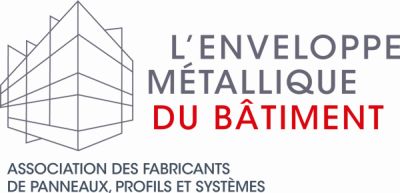INTRODUCTION
AUTHOR
 |
David IZABEL Directeur Technique Web: http://www.enveloppe-metallique.fr/
|
ABSTRACT
In this module we present, the key principles, types, main use, manufacturing processes, design methods, mechanical behaviour, of cold formed elements , together with the applicable standards. The main focus of interest is the seven families of steel profiles which were studied during the GRISPE European project
LEARNING GOALS
After viewing this course, you should be able to …
- … recall:
- The principles on which the cold formed elements are based, (thin metal sheet, add ribs as the Schell, add stiffeners in the compressed area, add embossments and/or indentations to facilitate steel/concrete collaboration)
- The different types and uses of the cold formed elements (members and sheeting)
- The way elements for purlin and cladding rail and portal frame, sheetings are used for cladding, roofing, covering, decking
- How cold formed element are produced (rolling)
- The main standards concerned by the cold formed elements. For the raw material: EN 10143, EN 10346, EN10169. For the CE marking: EN 14782 EN 14783, EN 1090-1 and EN 1090-4.
- The three classes of construction: III (not structural), I (diaphragm) and II (collaboration members/sheeting)
- The nine types of profiles currently not covered by the EN 1993-1-3
- The different ways in which cold formed elements can be studied (Design by calculation, design by testing, FEM)
- The different tests necessary to study a cold formed element (end support, intermediate support, single span bending test)
- The different types of collapse that can occur with cold form elements(buckling, yielding, local impression, dislocation, web crippling)
- … comprehend: the behaviour of the cold formed elements (the sheeting)
- … apply:the relevant European standards applicable to raw material, CE marking, design and the construction of buildings made up of cold formed elements.
- … use: a design by testing procedure test programme definition, specimen definition, tests analysis, tests report, ckeck or find the right formula.
- … synthesize:the criteria required for the cold formed structure and envelop: mechanical -local buckling-, acoustic -types of perforation-, thermal (position of spacer on liner tray in line with the thermal regulation)-, assemblies.
- … evaluate:the strength capacity of a cold formed element.
MODULE 1
VIDEO – OVERVIEW OF INTRODUCTION MODULE 1 By David Izabel
VIDEO – INTRODUCTION MODULE 1 By David Izabel
MODULE 2
VIDEO – OVERVIEW OF INTRODUCTION MODULE 2 By David Izabel
VIDEO – INTRODUCTION MODULE 2 By David Izabel
SELFASSESSMENTS AND ADDITIONAL MATERIALS
SELFASSESSMENT By David Izabel
PDF – SLIDES FROM THE VIDEOS By David Izabel

